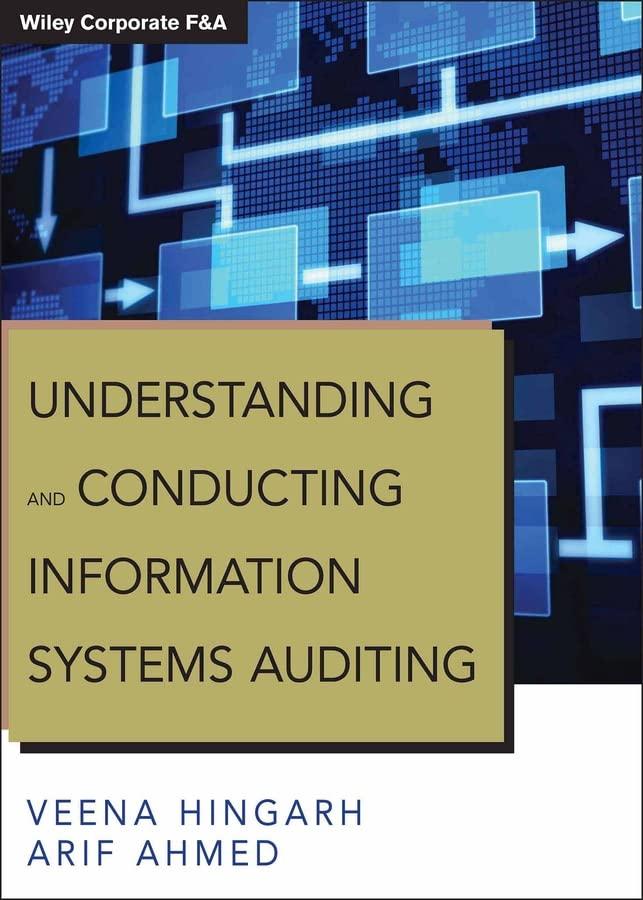Question
Now that you have assisted Albert in organizing his life and have made him aware of any disposable monthly income he might have, it is
Now that you have assisted Albert in organizing his life and have made him aware of any disposable monthly income he might have, it is time to help him evaluate some of his life goals to see if his goals are feasible.
Albert has told you that one of his goals is to start his own business within three years. He has estimated that he will need $7,000 in five years to get his business off the ground. Based upon your research of historical, moderate investment returns you determine that Albert should reasonably be able to obtain a return of 5.5% per year over this timeframe. (maybe use Excel for these next couple of questions)
How much does Albert need to deposit today in order to achieve this goal? Interest compounds annually on this investment.
Based upon Alberts liquidity, does he have enough currently saved to achieve this goal? (think current assets)
Based upon your analysis, Albert wonders if it might be better to put money away each month towards this goal instead of making such a lump sum payment. Using the same information:
Determine the monthly payment Albert would need to make in order to achieve his goal. Assume he will be making an initial investment of $1,000 towards this goal.
After determining the lump sum and monthly payment options for Albert he asks you for your opinion as to which option you feel would be in his best interests.
Which option do you recommend and why?
Albert is feeling really good about his visit with you right now and has asked you to help give him a head start on his tax planning for next year. He provides you with the below estimates for next years planning purposes:
Monthly W-2 wages $6,000
Ordinary dividends $50 per month
401(k) contribution rate 15% of monthly wages
Student loan interest $150 per month
Health savings account rate 2% of monthly wages
Tax filing status Single, standard deduction
2019 federal taxes paid $6,000
You collect this information and begin the planning process. Your first step is to determine the following for Albert:
What is his annual W-2 wage projection?
What is his annual dividend projection?
What is his annual student loan interest projection?
How much will he contribute to his 401(k) qualified plan next year?
How much will he contribute to his HSA next year?
Now that you have all of the information you need in order to estimate Alberts tax burden for next year please complete the 1040 and Schedule 1 tax forms in order to answer the following questions related to Alberts estimated tax for next year. The tax table for Albert is provided below.

What is the total income projected for Albert on 1040, line 9?
What is the total adjustment to income for Albert on Schedule 1, line 22 (also 1040, line 10a)?
What is Alberts projected Adjusted Gross Income, 1040, line 11?
What is Alberts projected taxable income, 1040, line 15?
What is Alberts estimated taxes due for next year, 1040, line 16?
Based on his actual taxes paid last year and your projected taxes for next year should Albert expect to pay additional tax next year or should he expect to receive a refund? How much?
You are two hours into your meeting with Albert and his final questions revolve around his credit card balance and a SMART goal related to all of the information you have provided to him from your analysis.
His credit card company isnt the greatest at telling Albert how much interest he is paying each month and he asks for your help. His most recent statement indicates an APR of 16.5% with interest compounding monthly. His current balance is $4,500, but he is about to make his regular monthly payment of $200.
How much interest will Albert incur the FOLLOWING month after he makes his next regular payment assuming he makes no additional charges on the card?
After he has made this next payment and in order to save some money for the down-payment to start his business Albert wonders two things:
How many months will it take him to pay off his credit card if he continues paying at his current monthly rate?
How many months will it take him if he makes only the minimum payment of $75 per month?
\begin{tabular}{|l|l|l|} \hline Rate & For Single Individuals & For Married Individuals Filing Joint Returns \\ \hline 18% & Up to $9,875 & Up to $19,750 \\ \hline 12% & $9,876 to $40,125 & $19,751 to $86,250 \\ \hline 22% & $40,126 to & $80,251 to $171,050 \\ \hline 24% & $85,525 \end{tabular} \begin{tabular}{|l|l|l|} \hline Rate & For Single Individuals & For Married Individuals Filing Joint Returns \\ \hline 18% & Up to $9,875 & Up to $19,750 \\ \hline 12% & $9,876 to $40,125 & $19,751 to $86,250 \\ \hline 22% & $40,126 to & $80,251 to $171,050 \\ \hline 24% & $85,525 \end{tabular}Step by Step Solution
There are 3 Steps involved in it
Step: 1

Get Instant Access to Expert-Tailored Solutions
See step-by-step solutions with expert insights and AI powered tools for academic success
Step: 2

Step: 3

Ace Your Homework with AI
Get the answers you need in no time with our AI-driven, step-by-step assistance
Get Started


